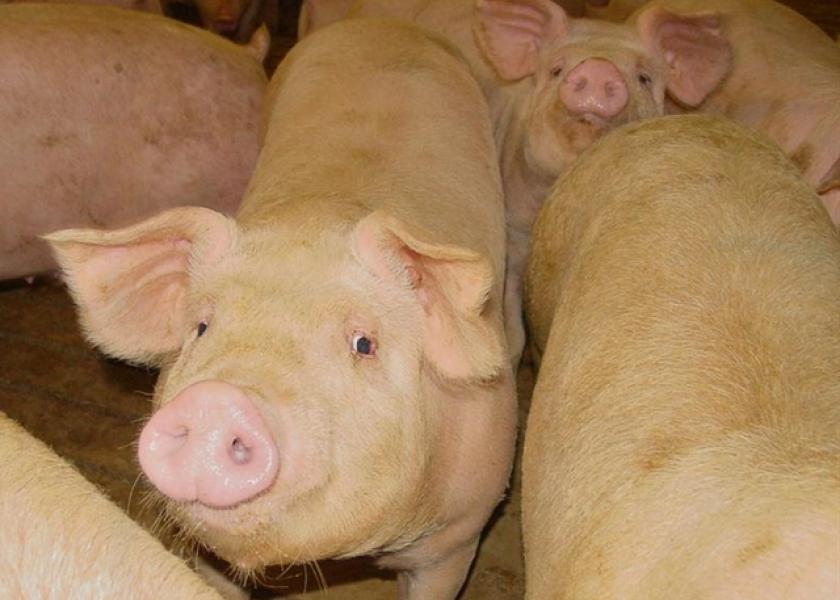Pork Producers Buoyed by New Sioux City Plant

Ken Gard's 50-year history of marketing hogs in Sioux City, Iowa ended — at least temporarily — with the closing of the John Morrell plant in April 2010.
"We used to sell to the stockyards. We were one of the last customers to leave there," said Gard, who farms just east of Sioux City. "We sold to Morrell until they closed, and then we went elsewhere. You have to adapt."
A much-ballyhooed project recently unveiled will give tri-state hog producers like Gard a chance to again bring market hogs to Sioux City, the Sioux City Journal reported.
Seaboard Foods and Triumph Foods have formed a joint venture to build a $264 million pork plant in the city's Bridgeport West Industrial Park.
Pork producers and commodities experts cheered the news, saying the plant will bring a new competitor and added slaughter capacity to an industry that's in the midst of a major growth mode.
The ample supply of hogs in the region was one of the key reasons the two companies cited for picking Sioux City for the plant, which will employ 1,100 initially.
Many of the hog producers who own Triumph Foods have farms in proximity to the Sioux City site, Triumph Foods CEO Mark Campbell said.
The St. Joseph, Missouri-based company's largest shareholder, Christensen Farms, manages more than 50 sow herds and 400 nurseries and grow and finish sites in Minnesota, Iowa, Nebraska, South Dakota, Illinois and Colorado.
Seaboard Foods, a division of publicly traded Seaboard Corp., also is a large integrated pork company, with 300 farms in Kansas, Colorado, Oklahoma and Texas that annually produce more than 4 million hogs.
Starting with a single shift, the Sioux City plant would have the capacity to slaughter 3 million hogs per year, or 10,000 to 12,000 per day.
Under the joint partnership, Seaboard and Triumph each would be responsible for supplying a third of that number, leaving about 1 million hogs to be purchased on the open market, Seaboard Foods President and CEO Terry Holton said.
"I was really glad to hear them say that," said Bill Tentinger, a farrow-to-finish operator near Le Mars, Iowa, and past president of the Iowa Pork Producers Association. "It's going to help me out as a producer tremendously, with increased competition for the hogs that are out there."
Tentinger sells his hogs at the Tyson Foods plant in Storm Lake, Iowa, one of eight slaughter facilities within a roughly 100-mile radius of Sioux City.
Since the Sioux City Morrell plant closed, Gard, an independent producer with a 4,000-head finish operation, has shipped most of his market hogs to the Hormel Foods plant in Fremont, Nebraska.
The 74-year-old said he pushed to find a replacement for the Morrell plant, which had slaughtered about 16,000 head per day.
"There's still a few open market hogs around," he said. "If we're allowed to market (at the Seaboard Triumph plant), it will help us considerably."
Joe Rotta, a farrow-to-finish producer from Merrill, Iowa, said he also sells a lot of hogs to Hormel in Fremont but has also shipped semitrailer loads to Triumph Foods' plant in St. Joseph.
"They already pull a fair amount of hogs out of Northwest Iowa," Tentinger said of Triumph. "They're paying the extra trucking to get them down there."
The freight for a semitrailer truck to St. Joseph runs upward of $1,000, Rotta said, nearly twice the shipping costs to some plants closer to the Sioux City area.
Since the St. Joseph plant opened in 2006, no other all-new pork slaughter facility has been built in the United States. Now two are in the works. In December, the Clemens Food Group, of Hatfield, Pennsylvania, announced plans for a $255 million plant in Coldwater, Michigan, that will employ 810 and slaughter 8,000 head per day.
Both the Iowa and Michigan plants are scheduled to open in 2017. And not a moment too soon, according to some market analysts.
With breeding herds growing, hog supplies will be bumping up against the total slaughter capacity even this year, said Steve Meyer, president of Paragon Economics, a Des Moines-based firm that analyzes agriculture markets.
"It doesn't help to grow more hogs if you can't process them," Meyer said.
The latest World Agricultural Supply and Demand Estimates report forecasts pork production to climb 1.2 percent higher in 2016, beyond the 6.8 percent growth predicted for this year.
"I've heard rumors that just in Northwest Iowa there's 40-some barns being built this year," Tentinger said. "There are going to be increased numbers."
Despite the larger supplies, hog prices have been increasing. In an industry May newsletter, Meyer noted that if estimates of production growth materialize, supplies in the fourth quarter of 2016 "will be large, but neither of these plants will be on line in time to help!"
History has shown that when slaughter output falls too short of hog supplies, disaster can strike. In 1998, in the aftermath of a plant in Michigan shutting down, live hog prices plummeted to $8 per hundredweight, the worst bid since the Great Depression.
"A lot of independent producers quit," said Dave Stender, an Iowa State University Extension swine production expert based in Northwest Iowa. "They just couldn't make a go of it back then. We don't ever want to see that repeated."







